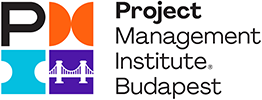December 06 2020 at 12:30PM
Delivery of value and quality in projects
The value of delivery in the form of a released product can be constantly assessed as long as acceptance and quality criteria are respected. And quality can be the responsibility of everyone involved.
In the focus of agility, Scrum aims to deliver a product or service of value to the customer throughout the project. This approach gives the team Scrum the time to focus on the quality functionality s essence is [SUT14].
Quality management can be directed towards both the project and the product. Another aspect refers to the functionalities attributed to products and services. A product may have a lower grade (few features) and high quality (without defects).
The customer satisfaction is the combination of compliance requirements (the project must produce what is promised) and fitness for use (the product or service must satisfy real needs). SCRUM meetings help in assessing requirements and assessing customer satisfaction [SUT14].
The product or service requirements can be extensive. In general and initially, teams argue that all requirements are relevant. But as the project progresses, prioritization becomes more important. SCRUM works with the definition of objectives that must be completed in a defined period [SUT14]. This allows teams to have immediate feedback on quality, technical debt, value delivered and work done. However, agile thinking advocates challenges such as satisfying customers by meeting changing requirements.
Quality Management is treated at SBOK and also at PMBok [PMI17, SBOK]. In SCRUM, quality management involves the activities of Quality Planning, Quality Control and Quality Assurance. At SCRUM, the approach includes user stories, acceptance criteria, backlog, unit test, quality test, successful demonstration for stakeholders and/or business representatives, among others [SBOK].
Continuous improvement and customer satisfaction are discussed in the agile and traditional approach. While PMI does not recommend that it be produced beyond what was established in the project scope (Gold Plating), the meetings in SCRUM also deal with the scope and especially the prioritization [PMI17, SBOK].
In the context of methodologies, Deming's Theory defends what management should do, in order to create an environment in which each employee can contribute significantly to the improvement of quality [GRA14]. In agility, team collaboration is paramount. Deming is also quoted from PMBok in the aspect of continuous improvement [PMI17, SBOK].
Juran Juran, Joseph M. defined quality as “the suitability for use” and defined forms of quality: the focus on the product the customer needs - very high quality will have a higher cost; o focused on cost and without failures or deficiencies - very high quality will have a lower cost [GRA14]. Suitability for use comes close to agility because it puts interested parties in contact with the product and the team.
Ishikawa proposes to explore all aspects that can cause quality problems before focusing on the solution. The model resembles a mind map used to represent problems and causes in the form of a diagram [GRA14].
Whether in the agile or traditional approach, quality management deserves attention in order to meet customer requirements and deliver value. It is suggested to use mind maps, such as Ishikawa, mentioned in PMBOk, in the agile direction. Differs m delivery cycles and other specific aspects of each approach.
References
[GRA14] James McGrath, 89 Management Theories That Every Manager Should Know. ISBN-13: 978-8502229303, Publisher: Saraiva; 1st edition (17 July 2014).
[PMI17] The PMBOK-PMI - Project Management Institute - Assembly Guide of Knowledge in Project Management. 6. ed. New Square: Project Management Institute, 201 7. ISBN 9781628251845.
[SBOK] A Guide to the SCRUM BODY OF KNOWLEDGE (SBOK ™ GUIDE) 3rd Edition, SBOK , SCRUMstudy ™, VMEdu, Inc. Available in: https://www.scrumstudy.com/
[SUT14] SUTHERLAND, JEFF. Scrum - The Art of Doing Double the Job in Half the Time. LEYA HOUSE OF WORD, 201 4.
Note and Disclaimer: The author of this Blog post is Leonard Grandinetti Chaves, MSc, PMP. He is the guest author of PMI.hu. The writing reflects the author's own professional opinion, findings, and conclusions, which do not necessarily agree with the position of PMI Budapest, Hungarian Chapter, and cannot be considered as an official recommendation, resolution, or opinion of PMI Budapest. The copyright and publication rights of the writing belong to the original author.




